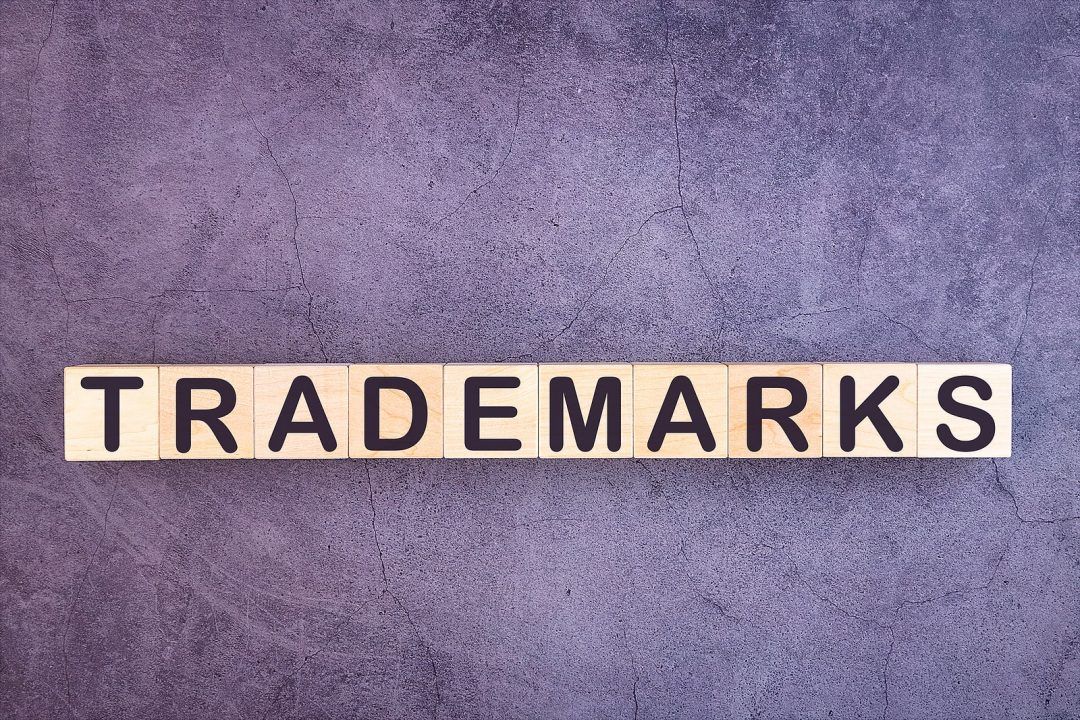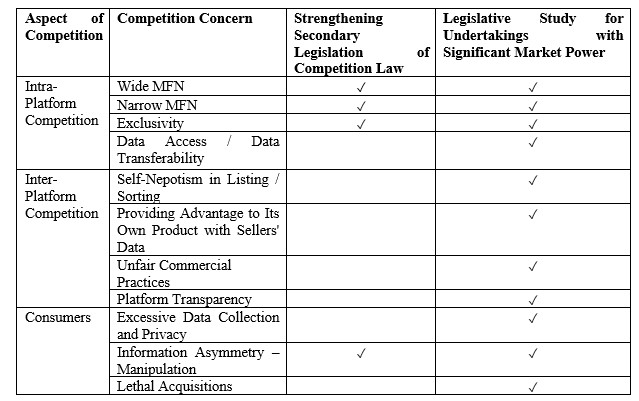1- Legislative Framework
1.1 Key Laws and Regulations
The main legislation governing the banking sector is Law No 5411 (the “Banking Law“). Other key legislative and regulatory provisions are:
- Law No 1211 on the Central Bank of the Turkish Republic;
- Law No 6362 on Capital Markets;
- Law No 6102 on the Turkish Commercial Code (TCC);
- Law No 6098 on the Turkish Code of Obligations;
- Law No 5464 on Bank Cards and Credit Cards;
- Law No 3226 on Financial Leasing;
- Law No 1567 on the Protection of the Value of the Turkish Currency;
- Law No 6493 on Payment and Security Settlement Systems, Payment Services, and Electronic Money Institutions;
- the Regulation on the Principles of Corporate Governance of Banks (the “Regulation on Corporate Governance”);
- the Regulation on the Authorised Transactions of Banks and Indirect Shareholding (the “Authorisation Regulation“); and
- the Regulation on the Directors of Banks.
The Banking Regulation and Supervision Agency (BRSA) ensures regulatory and consolidated supervisory in the Turkish banking system. Pursuant to Article 82 of the Banking Law, the BRSA is a public legal entity with administrative and financial autonomy. Accordingly, the BRSA independently fulfils the regulatory and supervisory duties and powers assigned to it by the Banking Law and related legislation. The BRSA is responsible for the regulation and operation of the activities of the institutions under its supervision, and for authorising their establishment and carrying out these functions in a safe and sound manner. The BRSA has the authority to carry out both prudential and conduct supervision and to request the institutions subject to its supervision to take the necessary measures. According to Articles 146 and 149 of the Banking Law, the BRSA is entitled to impose financial penalties and certain severe sanctions on banks. In addition, Articles 150 and 161 of the Banking Law state that shareholders and members of the board of directors can also be subject to sanctions and penalties. The BRSA acts in compliance with foreign supervisory authorities and has the authority to grant authorisation to independent audit firms, as well as valuation and rating agencies. Pursuant to Article 95 of the Banking Law, the BRSA also assesses the structure, adequacy and reliability of annual financial reports prepared by independent audit institutions.
2 – Authorisation
2.1 Licences and Application Process
Types of Licences
It is necessary to obtain permission from the BRSA in accordance with Article 6 of the Banking Law in order to establish a bank or a branch of a foreign bank in Turkey and to engage in banking, financial leasing and/or factoring activities. Banks must also obtain an operating licence from the BRSA.
Additionally, banks are required to obtain a licence from the Capital Markets Board to perform certain activities specified in Article 37 of the Capital Markets Law.
Activities of Licensed Banks and Any Restrictions
The operating licence covers all activities specified in Article 4 of the Banking Law, unless otherwise decided by the BRSA. The following activities are permitted to be carried out by banks:
- accepting deposits and participation funds;
- lending cash or non-cash loans, factoring, financial leasing services;
- providing capital market-related services such as issuance or a public offering of capital market instruments and conducting FX and derivative transactions;
- trading money market instruments and carrying out foreign exchange transactions;
- offering investment counselling services;
- guaranteeing transactions like undertaking guarantees and other liabilities in favour of other persons;
- intermediation for issuance or public offering of capital market instruments;
- providing insurance agency and individual private pension fund services;
- engaging in other activities to be determined by the BRSA;
- carrying out any type of payment and collection transactions, including cash and deposit payment and fund transfer transactions, correspondent bank transactions, or use of check accounts;
- safe-keeping services;
- carrying out foreign exchange transactions, trading of money market instruments, trading of precious metals and stones and safekeeping of such; and
- insurance agency and individual private pension fund services.
However, some of the activities listed above are restricted depending on the type of banks. Accordingly, development and investment banks cannot accept deposits and participation funds. Deposit banks cannot accept participation funds and cannot carry out financial leasing transactions. In addition, participation banks cannot accept deposits.
Pursuant to Article 39 of the Capital Markets Law, banks are also required to obtain a licence from the Capital Markets Board (CMB) for;
- receiving and transmitting orders for capital market instruments;
- executing orders for capital market instruments on behalf and account of the customer or on its own behalf and account;
- trading capital market instruments on its own account; and
- custody and administration of capital market instruments on behalf of the client and portfolio custody services.
Additionally, upon obtaining a licence from the CMB, investment and development banks may also engage in:
- managing portfolios;
- providing investment counselling;
- underwriting and sales intermediation in public offering of capital market instruments; and
- mediating sale without underwriting in the public offering of capital market instruments.
Conditions for Authorisation
The requirements for a bank establishment permit are as follows.
- The bank must be established as a joint stock company.
- Its shares must be issued in cash and registered shares.
- The founders must fulfil the necessary conditions.
- The members of the board of directors must have the necessary qualifications and professional experience to carry out the planned activities.
- The envisaged fields of activity are compatible with the planned financial, managerial and organisational structure.
- The minimum capital share should not be less than TRY30 million.
- Its articles of association must comply with the provisions of the Banking Law.
- It should have a transparent and clear shareholding structure and organisation chart.
- There should be no factors preventing consolidated audit.
- Business plans for the envisaged fields of activity, projections on the financial structure of the institution, including capital adequacy, a budget plan for the first three years, and an activity programme including internal control, risk management and internal audit system showing the structural organisation should be presented.
Banks that have obtained an establishment permit must comply with the following before the commencement of operations.
- The capital must be paid in cash and be sufficient to realise the planned activities.
- The provision of a document stating that at least one quarter of the system entrance fee, which is 10% of the minimum capital (TRY30 million), has been deposited by the founders to the fund and a commitment that the remaining amount will be paid to the fund in three monthly instalments.
- The bank must comply with the corporate governance provisions and have sufficient personnel and technical equipment.
- The managers must have the qualifications specified in the corporate governance provisions.
- The BRSA must be of the opinion that the bank has the necessary qualifications to carry out the activities.
Application Process
The applicant is required to apply to the BRSA for the establishment permit by submitting the necessary documents specified in Articles 4 and 5 of the Authorisation Regulation. The establishment permit must be approved by at least five of the seven board members of the BRSA. After obtaining the establishment permit, an operating permit must be obtained from the BRSA in accordance with Article 7 of the Authorisation Regulation. The application for an operating licence must be made within nine months from the date of publication of the BRSA’s decision on the establishment authorisation in the Official Gazette. In addition, an activity licence fee amounting to TRY2,128,115.80 (regulated in Tariff No 8 attached to the Law on Fees No 492) must be paid. This fee is paid both at the time of application for an activity licence and in each year of banking activities. Pursuant to Article 7 of the Permit Regulation, the BRSA issues the operating licence within three months at the latest from the date of application. The authorisations are valid as of the date of publication in the Official Gazette.
3 – Control
3.1 Requirements for Acquiring or Increasing Control Over a Bank
Pursuant to Article 19 of the Banking Law, the following require the permission of the BRSA:
- the merger of banks with one or more banks or financial institutions;
- the transfer of assets and liabilities of banks;
- the acquisition of all assets and liabilities of banks;
- the division of banks; and
- the change of shares.
The documents listed in Article 11 of the Licence Regulation must be attached to the applications to be made to the BRSA regarding these acquisitions and transfers, and the documents to be submitted in case the bank or financial institution is established abroad are also mentioned in the same Article.
Within three months from the date of authorisation, the relevant bodies of the banks are required to take a decision in accordance with Articles 7, 11, 15 and 19 of the Regulation on Merger, Transfer, Demerger and Share Exchange of Banks and to commence the permitted transactions. Otherwise, the authorisation granted shall be null and void.
After the acquisition, all assets and liabilities are transferred to the acquiring bank, the legal personality of the transferred institution is terminated, and it is removed from the Trade Registry.
According to Article 18 of the Banking Law, the following types of share acquisitions require the approval of the BRSA:
- the direct or indirect acquisition of shares representing 10% or more of a bank’s capital;
- the direct or indirect acquisition of shares representing or exceeding 10%, 20%, 30% or 50% of the share capital of a bank; and
- shareholding below 10%, 20%, 30% or 50% of the share capital of a bank.
As per Article 18 of the Banking Law, regardless of the percentage of share acquisition/transfer, the approval of the BRSA is required for the right to appoint members to the board of directors or audit committee and for the transfer of privileged shares or the issuance of new privileged shares.
Qualified shares are shares that directly or indirectly represent 10% or more of the capital or voting rights of the bank, or that give the privilege to appoint members to the board of directors even if this rate is below 10%. Shareholders with qualified shares must meet the conditions required for founders. Otherwise, they will no longer be entitled to shareholding rights other than dividends. It is important to noted that as a condition for obtaining the BRSA’s authorisation, a transfer fee of 1% of the nominal value of the shares to be transferred must be paid to the Savings Deposit Insurance Fund (SDIF) by the transferee. If the shares are transferred without the authorisation of the BRSA, the shareholding rights of the legal entity arising from these shares, other than dividends, will be used by the SDIF.
Article 3 of the Law No 4875 on Foreign Direct Investment states that foreign investors shall be treated equally with domestic investors. Therefore, there are no specific restrictions on foreign ownership under the Banking Law.
4 – Supervision
4.1 Corporate Governance Requirements
According to Article 22 of the Banking Law, structure, processes and principles regarding the corporate governance of banks are determined by the BRSA by taking the opinion of CMB and its associations.
Turkish banks are required to establish:
- a board of directors;
- a general manager and deputy general manager;
- a corporate governance committee;
- a remuneration committee;
- an audit committee;
- internal systems units;
- a compliance unit in relation to compliance with anti-money laundering legislation; and
- a credit committee (if the board of directors delegates its credit-related duties).
There must be at least five members (including the general manager) of the board of directors. The audit committee, which will be established by the board of directors, will have at least two members. Members will be appointed among the board members, but they cannot have an executive position.
According to Article 25 of the Banking Law, a bachelor’s degree in law, economics, finance, banking or business administration, and related fields, or an undergraduate degree in engineering together with a graduate degree in one of these fields and ten years of professional experience in banking or business administration is required for general managers. Deputy general managers are required to have at least seven years of professional experience. In addition, it is important to note that, at least two-thirds of the deputy general managers of a bank must have at least an undergraduate degree in one of the above fields.
The Regulation on Corporate Governance is another essential regulation on the corporate governance and management requirements of banks. Under this Regulation, the corporate governance principles are defined as follows.
- The corporate values and strategic targets must be determined within the bank.
- The authority and responsibilities must be explicitly determined and applied within the bank.
- The members of the board of directors must have the qualifications to fulfil their duties effectively, be aware of their role in corporate governance and be able to make independent assessments on the bank’s activities.
- The senior management must be qualified to fulfil their duties effectively and be aware of their role in corporate governance.
- The studies conducted by both bank supervisors and independent auditors must be used effectively.
- Remuneration policies must comply with the ethical values, strategic targets and the internal balances of the bank.
- Transparency in corporate governance must be ensured.
4.2 Registration and Oversight of Senior Management
The Banking Law does not specifically regulate the appointment or dismissal of board members or senior executives. In this case, since banks are joint stock companies, the provisions of the TCC shall apply.
Pursuant to Article 370 of the TCC, the board of directors may delegate its representation authority to one or more managing directors or third parties as directors. At least one member of the board of directors must be authorised to represent the company. According to Article 370 of the TCC, the board of directors may appoint those who are affiliated with the company with an employment contract as senior executives or other managers with limited authority.
According to Article 4-5-6-7 of the Regulation on the Directors of Banks, the selection or appointment of directors or senior managers must be notified to the BRSA within seven business days. The notification will include several documents providing the information required for the position.
Following their election or appointment, the members of the board of directors, the chairperson and members of the board of managers are obliged to take an oath before starting their duties. Pursuant to Article 9 of the Regulation on the Directors of Banks, the general manager, who is the ordinary member of the board of directors, and the persons who will represent the general manager must take an oath. The oath is taken at the commercial court and the document issued after the oath is sent to the BRSA. According to Article 10 of the Regulation on the Directors of Banks, directors and senior executives are obliged to declare their assets.
Legal duties of bank directors and senior executives are regulated under the Regulation on Corporate Governance. Directors and senior executives must perform their duties in a fair, transparent, accountable and responsible manner, as set out below.
- They shall ensure that the bank’s business is carried out within the framework of mission, vision, goals and policies.
- They shall act in accordance with the financial and operational plans approved by the board of directors.
- They shall comply with the Banking Law, regulations issued pursuant to the Banking Law and other legislation, articles of association and internal regulations of the bank.
- They should not accept gifts, directly or indirectly, or provide an unfair advantage in relation to the bank’s business.
- They shall ensure transparency in corporate governance.
- They shall ensure that the remuneration policies are compatible with the ethical values, strategic goals and internal balances of the bank.
- They shall observe customer rights in the marketing of bank products and services and during the service relationship.
- They shall detect the problems in the risk management, internal control and internal audit systems of the bank and provide that the bank’s financial reports correctly reflect the bank’s financial state and performance. The senior management shall comprehend and make the personnel also comprehend the importance of the risk management, internal control and internal audit system.
4.3 Remuneration Requirements
On 31 March 2016, the BRSA published the Guide on Good Remuneration Practices in Banks (the “Guide”) to provide a better remuneration system for bank employees, including executives and qualified staff. The Guide sets out some principles and minimum standards in determining all kinds of material benefits to bank employees and managers. However, it should be noted that the principles set out in the Guide are not mandatory provisions.
The Guide aims to ensure that the remuneration policy, process and practices of banks are established within the framework of a sound and effective risk management approach, and explains the good practices expected from banks in this regard.
The Guide covers the bank’s board of directors, senior management and all other employees, as well as identified staff. Identified staff are the staff whose professional activities have a material impact on the bank’s risk profile.
The implementation of the Guide is based on the principle of proportionality. Accordingly, not all banks have to comply with the requirements on remuneration in the same scale and way, and systematically important banks should develop more detailed policies, processes and practices. Banks are responsible for keeping the risk exposure under control by assessing their own characteristics and establishing remuneration policies and practices. The following practices should be adopted by systemically important banks, while other banks should implement these practices considering their own risk structure and strategies.
- At least 40% of variable remuneration should be deferred.
- The minimum deferral period is three years.
- At least 50% of variable remuneration should be paid with non-cash financial instruments.
- Non-cash financial instruments should be retained for a certain period.
- Malus and clawback provisions should be in place.
The bank should establish a clear and written remuneration policy in accordance with the following principles.
- It should maintain sound and effective risk management.
- It should not be associated with an excessive short-term profit-making goal of the bank exclusively.
- It should not encourage risk taking that is beyond the tolerated risk the level of the institution.
- It should be appropriate to the scope and size of the operations, risk management structure, strategy, long-term financial strength, and capital adequacy and should incorporate measures to address conflicts of interest.
The bank should consider the impact of remuneration policies on financial soundness indicators such as capital and liquidity. In the case of a threat against capital adequacy or if needed, a more conservative policy should be followed.
Under the Regulation on Corporate Governance, bank directors and senior managers should ensure that remuneration policies are in line with the ethical values, strategic objectives and internal balances of the bank. In addition, Turkish banks are required to establish a remuneration committee.
5 – AML/KYC
5.1 AML and CFT Requirements
Countries across the globe implement anti-money laundering (AML) and countering the financing of terrorism (CFT) measures to fight illicit finance. As part of the Financial Action Task Force (FATF), Turkey has adopted stiff AML/CFT regulations to shield its financial framework from illegal money flows and combat terrorist funding. AML and CFT measures are governed by Law No 5549 on the Prevention of Laundering Proceeds of Crime in Turkey. Alongside its amendments and its guidelines, this legislation defines the roles and tasks for key players like banks, designated non-financial organisations and government agencies.
Financial institutions serve crucially to detect and avert money laundering and terrorist financing. With policies, procedures and internal controls in place, organisations must identify and report suspect activity or transactions. Encompassed within these measures are customer due diligence, enhanced due diligence for high-risk clients, ongoing monitoring and document-keeping.
Compliance requires financial institutions to have a designated officer in charge of managing AML/CFT processes, including risk evaluations and personnel training. Organisations need to develop internal checks to determine how effective their AML/CFT procedures are.
Designated non-financial business and professions (DNFBP) such as lawyers, accountants, realtors and gemstone vendors in Turkey also fall under the purview of AML/CFT requirements. Transactions that are reported as suspicious must be followed up with Financial Crimes Investigation Board (MASAK), and transactional data needs to be preserved.
In accordance with AML and CFT requirements, MASAK ensures proper regulatory oversight and enforces conformity among financial institutions. Through inspections and audits, MASAK guarantees that financial institutions and DNFBPs comply with their responsibilities.
In order to combat these issues, Turkey has put into place efforts to boost global collaboration. To share data and collaborate on cases, MASAK has developed bilateral pacts and co-operation procedures with multiple nations. By taking part in several intergovernmental groups and projects focused on improving worldwide AML and combating CFT activities, Turkey has implemented robust measures to fight against money laundering and terrorist financing risks. Financial institutions and other organisations, such as DNFBPs, must work together to ensure the overall stability of the economy through adherence to regulations.
6 – Depositor Protection
6.1 Depositor Protection Regime
The BRSA oversees the depositor protection framework under Banking Law in Turkey. The BRSA performs a crucial function by ensuring the stability and integrity of the banking system and protecting depositors’ rights. Regulatory bodies such as the CMB, MASAK and the Central Bank of the Republic of Turkey (CBRT) work in tandem.
The depositor protection regime safeguards a wide range of depositors and their deposits. Depositors, who can be businesses or individuals, are protected regardless of where they reside.
Protecting depositors’ rights is the responsibility of the SDIF. Each depositor is protected up to TRY400,000 by deposit insurance at each bank. If a depositor has multiple accounts at the same bank, their coverage is capped. Separate depositors are, in joint accounts, and individual insurance coverage applies to each one. The depositor protection regime also covers foreign currency deposits, the coverage for which is calculated based on the exchange rate determined by the CBRT at the time of failure or withdrawal.
The depositor protection scheme in Turkey organised by SDIF ensures safety for bank depositors. By implementing various measures, the SDIF ensures the safety of depositors and the stability of the banking system. The BRSA and other regulatory agencies help the organisation fulfil its obligations.
Scheme Funding for Depositor Protection
The funding of the depositor protection scheme is essential for its long-term viability. In Turkey, the scheme is funded from various sources, including contributions from banks. The level of contributions depends on the SDIF-determined risk ratio and bank deposit size. Bank contributions contribute substantially to ensuring that the SDIF can protect depositors in the event of bank failures.
Aside from contributions from banks, other sources include recovery efforts from failed banks, investments and loans.
In addition to supervising and regulating the banking system, the BRSA is also responsible for ensuring the protection of depositors. As part of its responsibilities, it ensures that banks adhere to the provisions of the depositor protection scheme and takes appropriate measures to protect depositors’ interests.
Importance of Depositor Protection
Protecting depositors is essential to maintaining the trustworthiness and stability of the banking system. With increased confidence, depositors save more, leading to financial stability promoted by banks. Robust safeguards against potential risks are offered by Turkey’s deposit insurance system, bolstering both depositor trust and financial stability.
Enforcement and Sanctions
The BRSA has the authority to enforce the provisions of the depositor protection regime and impose sanctions on banks that fail to comply. The sanctions may include financial penalties, restrictions on banking activities, and disciplinary actions against bank executives and board members. These enforcement measures ensure the effectiveness and integrity of the depositor protection scheme.
7 – Bank Secrecy
7.1 Bank Secrecy Requirements
The BRSA has established a comprehensive Regulation on Sharing of Secret Information (the “Secrecy Regulation”) regarding how banks share confidential information with each other. The Regulation aims to protect the rights of bank customers while allowing for necessary disclosures in specific circumstances. The purpose of this Regulation is to strike a balance between preserving customers’ privacy and making disclosures when appropriate. It specifically describes the principles and methods for disclosing sensitive information. Both individuals and entities who have developed customer connections with banks are subject to Turkey’s bank secrecy laws. The term “customer secret” is used generally and refers to any information that a person or organisation claims to be connected to their financial connection. In addition, banks are required to protect the privacy of information they accept from other banks even if no customer relationship has been created.
Pursuant to the Article 4/3 of the Secrecy Regulation, the information covered by bank secrecy requirements includes any data specific to banking activities that is collected from customers after establishing a customer relationship. It is important to note that the confidentiality obligation also applies to information that identifies an individual as a customer of a bank, even if no formal customer relationship has been established.
While banking confidentiality is a general obligation, exceptions exist for disclosing confidential information under certain circumstances. These exceptions allow necessary disclosures while protecting customer privacy.
According to Article 5/1 of the Secrecy Regulation, disclosing secret information to those who are authorised by law, such as courts, tax authorities, the BFSA, SDIF and MASAK, does not constitute a breach of the obligation to keep the information secret.
Non-disclosure agreements play an important role in allowing the exchange of confidential information in specific situations listed in Articles 5/2, 5/3 and 5/4. These exceptions allow the exchange of information and documents between banks and financial institutions and through the Risk Centre established under the Banking Act. The exchange of information and documents on the sale of such shares for the purpose of informing potential buyers and for use in the valuation of assets, including loans and securities relating to such assets, provided that at least 10% of the Bank’s capital is represented directly or indirectly does not constitute a violation. If the required administrative and technical procedures are used the disclosure of information and documents to individuals who perform services in the areas of valuation, rating, support services, and independent audit activities does not constitute a violation of confidentiality.
A breach of the obligation of banking secrecy can have serious consequences for the banks and the individuals involved. The Secrecy Regulation emphasises the continuity of the obligation to maintain secrecy, even if the person who has obtained the confidential information has left their position. Breaches of the obligation to maintain confidentiality may result in legal, criminal, and regulatory sanctions, including one to three years’ criminal penalty.
Proportionality is a fundamental aspect of banking secrecy. It limits the scope of information exposed and guarantees that the scope of confidential information disclosure is appropriate to the purpose of the disclosure. In making disclosures, banks must demonstrate that the proportion of data disclosed is necessary to achieve the intended purpose. Where possible, methods of aggregation, de-identification or anonymisation methods should be used to disclose information.
8 – Prudential Regime
8.1 Capital, Liquidity and Related Risk Control Requirements
The adoption of Basel III in law requires aligning legal provisions with international standards. The Turkish government and regulatory authorities have taken measures to ensure that Turkish banks adhere to the requirements of Basel III.
The implementation of robust risk management measures is essential to ensuring financial stability in an interconnected global economy. To achieve this goal, the Basel III standards have emerged as a crucial framework. The Basel III standards, developed by the Basel Committee on Banking Supervision (BCBS), aim to enhance the resilience of the global banking system. Following the financial crisis of 2008, these standards were developed to prevent a repeat of that event. Capital adequacy, supervisory review process, and market discipline and disclosure are the three main components of the framework.
Basel III is built on the following three pillars.
- Minimum capital requirements: banks need to ensure they have capital commensurate with the risk-weighted assets. In this case, banks must make sure they have adequate quantity and quality of capital for continuous and smooth operation even in the wake of loss absorption.
- Supervisory review process: this pillar involves a supervisory oversight and scrutiny process. Together, these are used in evaluating risk management, capital adequacy as well as soundness in general. Regulators should encourage banks to improve their internal assessment of capital to reflect current standards.
- Market discipline and disclosure: transparency and market discipline are emphasised in Basel III. This way, investors and the other people in the general population should be able to determine how much would be required to provide enough capital and what risks they face in order to make proper judgments.
Turkey understands the significance of harmonising its financial sector rules with global standards, considering its membership of the G20. Turkey has integrated the principles of Basel III into its domestic banking regulations, namely the BRSA’s Regulation on Banks Capitals and Regulation on Measurement and Assessment of Capital Adequacy of Banks. This marked a significant advancement in the BRSA’s efforts to strengthen its banking industry and improve its risk management procedures.
One of the most significant changes that Basel III has brought about is changes in a bank’s capital adequacy requirements. Turkish banks must maintain a minimum capital adequacy ratio of 10.5%, which is higher than the previous requirement of 8%. This increase ensures that banks are better prepared to withstand financial shocks by maintaining a strong capital base.
Basel III standards have also introduced stringent risk management rules in Turkey. Banks are required to conduct rigorous stress tests to assess their ability to withstand adverse economic conditions. This ensures that banks are adequately capitalised to absorb potential losses and maintain stability during periods of financial downturns. Additionally, Turkish banks are required to maintain higher levels of high-quality liquid assets stock sufficient to cover net cash outflows in the next 30 days to safeguard against liquidity risks. Basel III has also brought another change in Turkey’s capital adequacy requirements. Turkish banks must maintain a minimum capital adequacy ratio of 12% with capital buffer higher than the previous requirement of 8%. This increase ensures that banks are better prepared to withstand financial shocks by maintaining a strong capital base. As a result of all these regulations, the bank’s capital adequacy ratio was 19.5% in 2022, well above and stronger than minimum standards sets out in Basel III and local regulations.
Systemically Important Banks
Systemically important banks are essential to the development and expansion of the country’s economy. However, their size and importance also pose serious hazards and regulatory concerns. On 23 February 2016, the BRSA issued the Regulation on Systemically Important Banks. This new Regulation introduces a method that relies on indicators to determine the significance of a bank in the system. Factors such as the banks size, level of interconnections, complexity and substitutability are taken into consideration using indicators and sub-indicators. Furthermore, this regulation imposes an additional requirement for equity capital ranging from 1% to 3% on banks that are identified as systemically important and mandates them to provide more comprehensive and timely reporting to regulators, shareholders and the public. This transparency ensures that risks are more visible and can be addressed promptly.
The Basel III standards are a crucial step towards the strengthening of the international banking system. The framework has enhanced the resilience of the banking industry in Turkey by increasing the capital requirements, improving the risk management procedures, developing liquidity standards and promoting transparency.
9 – Insolvency, Recovery and Resolution
9.1 Legal and Regulatory Framework
Resolving a Failing Bank
As a result of the authorisations granted to the BRSA by the Banking Law in Turkey, the BRSA has a very effective supervision and control mechanism over banks. The BRSA is authorised by the Banking Law to take measures by limiting and regulating the assets, receivables, shareholders’ equity, debts and liabilities of banks and all other factors affecting the financial balance. Banks are obliged to comply with these regulations and to implement the measures requested by the BRSA within the specified period.
The BRSA has the authority to audit whether the restrictions and regulations against banks are implemented or not. The BRSA is intended to operate as an effective supervisory mechanism by conducting on-site inspections and checking the information, documents and reports requested from the banks. In line with all these provisions, it is understood that the primary purpose of the Turkish banking legislation on banks is to “prevent” the possibility of bank failure through an effective supervision mechanism.
Situations such as a bank’s assets failing to meet its liabilities or failing to comply with regulations regarding liquidity, its profitability not being at a level sufficient to continue its activities safely, its funds being insufficient within the framework of the provisions regarding capital adequacy, or the possibility of this situation being realised are specified in the Law as situations that require measures to be taken. When the systematics of the Banking Law are analysed, it can be seen that the measures specified in Articles 68, 69 and 70 are qualitatively differentiated from each other as “corrective”, “restrictive” or “remedial”.
Corrective measures are defined as milder measures, such as increasing the bank’s shareholders’ equity, suspending dividend payments, restricting or stopping new investments and suspending loans to shareholders for a period of time. Remedial measures are defined as the disposal of long-term or fixed assets with an appropriate period, reduction in operating and administrative expenses, or the cessation of payments other than regular payments to the bank’s employees under any name. Restrictive measures include more severe measures such as:
- the suspension of the bank’s domestic and foreign operations;
- imposing any restriction or limitation pertaining to the collection and extension of funds;
- dismissing some or all of the general manager, deputy general managers, relevant unit and branch directors, including board of directors; and
- merging with another willing bank or banks.
If the bank fails to take measures or the total value of its liabilities exceeds its total assets or the conditions specified in Article 71 of the Banking Law occur, the BDSA is authorised to revoke the operating licences of these banks or to transfer their shareholding rights excluding dividends and their management and supervision to the SDIF for partial or complete transfer, sale or merger, provided that the loss is deducted from the capital of the existing shareholders.
Pursuant to Article 106 of the Banking Law, in the event that the operating licence of a bank is revoked, its management and supervision shall be transferred to the SDIF, and the SDIF shall pay the insured deposits and insured participation funds and request the direct bankruptcy of the bank instead of the depositors and participation fund holders. Within this framework, the SDIF may request the partial or complete revocation of the bank’s operating licence or assume its losses by providing financial support.
Implementation of the Financial Stability Board Effective Resolution Regime in Turkey
According to the Financial Sector Assessment Program’s (FSAP) “Peer Review of Turkey” dated 19 November 2015; the FSAP concluded that the bank resolution and deposit insurance frameworks in Turkey were well designed, reflecting the experience gained from the 2000-01 banking crisis. In particular, the 2005 Banking Law had significantly improved procedures for the resolution of failing banks. It examines:
- the process for putting a failing bank into resolution;
- the resolution authorities;
- the funding of bank resolution;
- information sharing and co-operation among relevant authorities domestically and abroad; and
- recovery and resolution planning.
Substantial reforms have been implemented in the resolution regime since the banking crisis of 2000-01, during which several Turkish banks faced failure. These improvements were particularly notable in the 2005 Banking Law reform, which enhanced the procedures for handling failing banks. Since 2005, only one bank resolution case has occurred, involving a small bank in May 2015. As a result, the current framework’s effectiveness remains untested in handling the failure of a bank with the potential to create systemic risks.
The key authorities (KAs) advise that authorities should ensure that there are recovery and resolution plans in place for all domestic banks that could be systemic in the event of failure. Furthermore, authorities should have powers to require banks to adopt measures to improve their resolvability.
At present, the existing framework lacks both of these provisions. There is no existing obligation for banks to create and uphold recovery plans, and the authorities lack the legal authority to conduct resolution planning or mandate a bank to eliminate impediments to resolution, except in cases where the bank is already undergoing resolution and is under the supervision of the SDIF. Resolution planning is initiated solely when the BRSA informs the SDIF that a bank has been instructed to implement corrective, remedial or restrictive measures.
At that point, when it becomes likely that resolution may be required, the SDIF develops a Resolution Action Plan, which includes alternative bank-specific resolution plans; a verification process for determining the number of insured deposits to be covered; and plans for the rapid deployment of personnel for the safeguarding of information technology systems and data of the bank. However, this falls short of the resolution planning specified in the Key Attributes, and the authorities do not have a framework by which they identify banks that are likely to be systemic in the event of failure for resolution purposes.
Deposits in the Case of Insolvency
In accordance with Article 63 of the Banking Law, savings deposits and participation funds held by natural persons in credit institutions are subject to insurance provided by the SDIF. The specific coverage amount is determined by the SDIF Board, following approval from the Central Bank, the BRSA and the Treasury. For the year 2023, savings deposits and participation funds not related to commercial transactions are insured up to TRY400,000 per individual. The SDIF establishes the risk-based insurance premium tariff, collection schedule, methodology, and other related terms after consulting with the BRSA.
10 – Horizon Scanning
10.1 Regulatory Developments
To ensure a banking environment the BRSA has recently implemented a range of regulations and guidelines for operations in digital banking.
As digital banking continues to grow, it is crucial to establish frameworks that protect the security and integrity of financial transactions. In Turkey, the regulatory framework governing banking is primarily based on Law No 6493, which addresses Payment and Securities Settlement Systems, Payment Services and Electronic Money Institutions.
Furthermore, the Regulation on Remote Identification Methods for Use via Banks and the Establishment of Contractual Relationships in an Electronic Environment was introduced through publication in the Gazette on 4 January 2021. This Regulation outlines remote identification techniques that banks can employ to onboard customers and establish relationships using digital communication devices instead of traditional paperwork. It offers a framework that supports banking services while ensuring compliance with international standards.
Monetary transparency is crucial for KYC guidelines, as they prevent various types of financial crimes. With stronger KYC measures in place, financial institutions will be able to verify their customers’ identities, perform due diligence on them to determine their risk profile, and showcase their activities. KYC helps to prevent money laundering, fraud, identity theft and other monetary crimes that can have devastating consequences for both customers and financial institutions. Digital banks have to gather up-to-date and accurate details of customers, such as name, address, birth date, as well as documents of identification.
The BRSA has also published a draft communiqué regarding the efficient handling of climate-driven finance-related risks in banks. The aim of these guidelines is to provide guidance on how to manage the climate-related financial risks related to the Turkish banking system. The rules state that banks must apply the principles accordingly to the size of the banks, organisational structure and complexity of business activities. The guidelines are aligned with the objective of the BRSA to reduce environmental and social risks that endanger financial stability and promote the transition to a low carbon state.
11 – ESG
11.1 ESG Requirements
In recent years, as the concept of sustainability has gained importance, ESG (environmental, social and governance) has also gained great importance. ESG refers to making investment decisions by considering environmental awareness, social impact and corporate governance issues.
Since 2015, the size of global investment funds considering ESG criteria has tripled. In a very short period of time, ESG criteria will become a prerequisite for access to finance, and companies that do not take these criteria into account will find it very difficult to compete in national and international markets.
Financing activities constitute one of the most important activities in the process of decarbonising, or in other words, transitioning to a greener economy. Sustainable banking efforts to tackle environmental and social problems in Turkey accelerated with the signing of the Paris Climate Agreement.
The increasing awareness of how to manage environmental and social risks in the banking system in Turkey has led to numerous banks developing practices in this area or attempting to build capacity. Fifteen banks, accounting for 62% of the sector’s share, have established an environmental and social risk assessment system to conduct risk assessments on a project and client-specific basis. Some banks even conduct portfolio-level analyses such as scoring, heat mapping, stress testing, scenario analysis, or work on building capacity in these areas.
Despite the practices within the sector and the steps taken by authorities, the concept of sustainable finance in Turkey has not progressed in parallel with the banking industry’s level of development and diversity. The obstacles to this development can be categorised into two main areas: structural and institutional.
The structural issues primarily involve uncertainties in the macroeconomic environment, low national savings rate, and the banking sector’s short-term funding structure. These problems significantly limit banks in building corporate capacities for sustainability, accessing long-term funds, and, consequently, providing the essential long-term financing needed for sustainable investments.
One of the main institutional problems is the lack of a green classification for economic activities. The lack of a classification prevents the labelling of assets, liabilities and financial instruments in terms of sustainability and the production of consistent and reliable data on sustainability, making it difficult to carry out assessments and formulate policies.
For these reasons, the Turkish banking sector needs legislative regulations that can improve its weaknesses in order to provide ESG criteria in terms of sustainability. The sector’s short-term funding structure, the absence of taxonomy leading to deficiencies in green asset identification and classification, the inability to provide comparable and reliable data, the absence of necessary standards for regulation and supervision in the field of sustainable finance, and the lack of adequate analytical capacity regarding climate change are the weakest points hindering the fulfilment of these criteria.
Therefore, the priority is to make the necessary legislative amendments to improve these issues.











